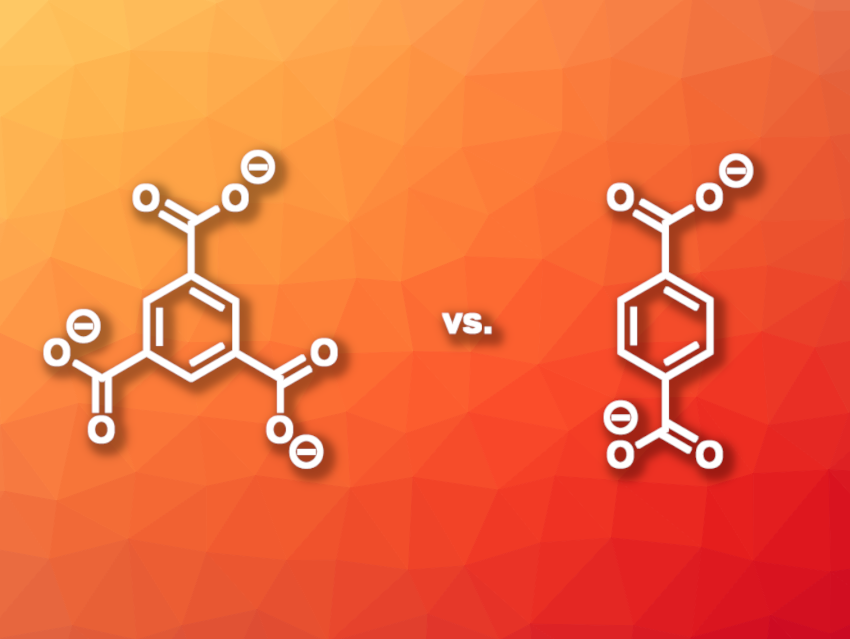Metal–organic frameworks (MOFs) are crystalline, porous materials composed of metal centers and organic linkers. They have applications, e.g., in gas separation or catalysis. Improving the mechanical stability of MOFs can be important, e.g., if MOF powders are compressed in postsynthetic processing. So far, there is a lack of systematic investigations of the mechanical stability of the many known MOFs. Understanding the influence of different factors such as ligand connectivities or pore volumes could be helpful for the development of mechanically robust MOFs.
Francesco Capitani, Synchrotron SOLEIL, Saint-Aubin, France, and colleagues have studied the high-pressure behavior of the mesoporous MOF MIL-100(Cr), which consists of trimeric chromium oxide building blocks linked by the tritopic linker 1,3,5-benzenetricarboxylate (BTC), and compared it to the MOF MIL-101(Cr), which is a similar framework with the ditopic linker 1,4-benzenedicarboxylate (BDC, both linkers pictured). The team prepared MIL-100(Cr) via a hydrothermal synthesis from trimesic acid and CrO3. They investigated the behavior of MIL-100(Cr) under high pressures in a diamond anvil cell using synchrotron X-ray diffraction (XRD) and infrared (IR) spectroscopy. They used both solid and fluid pressure-transmitting media, i.e., NaCl or CsI as solids and polydimethylsiloxane (PDMS) as a fluid.
The team found that MIL-100(Cr) with its tritopic linker has a bulk modulus (a measure of the resistance to compression) almost ten times higher than that of MIL-101(Cr) with its ditopic linker. In a solid pressure-transmitting medium, MIL-100(Cr) underwent amorphization at 0.6 GPa, compared with 0.1 GPa for MIL-101(Cr). In polydimethylsiloxane as a fluid pressure-transmitting medium, MIL-100(Cr) undergoes amorphization at a higher pressure of 12 GPa because the fluid fills the MOF’s pores, compared with ca. 7 GPa for MIL-101(Cr). This is an indication that the higher stability is due to the linkers and not the porosity of the frameworks. Overall, the work highlights the importance of linker connectivity for the mechanical stability of MOFs.
- Exploring the Role of Ligand Connectivity in MOFs Mechanical Stability: The Case of MIL-100(Cr),
Anna Celeste, Pierre Fertey, Jean-Paul Itié, Gabriela Blanita, Claudia Zlotea, Francesco Capitani,
J. Am. Chem. Soc. 2024.
https://doi.org/10.1021/jacs.3c14589




